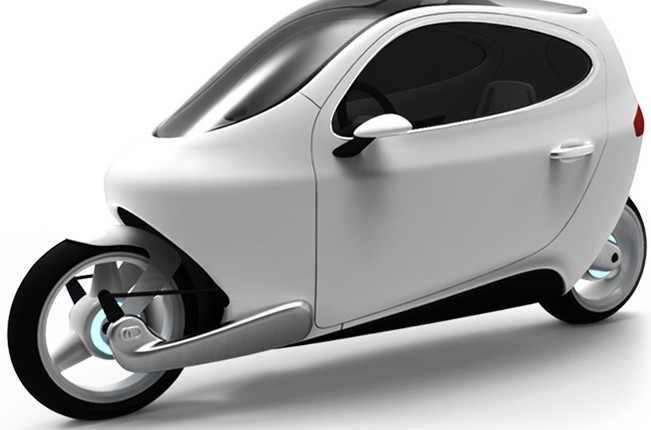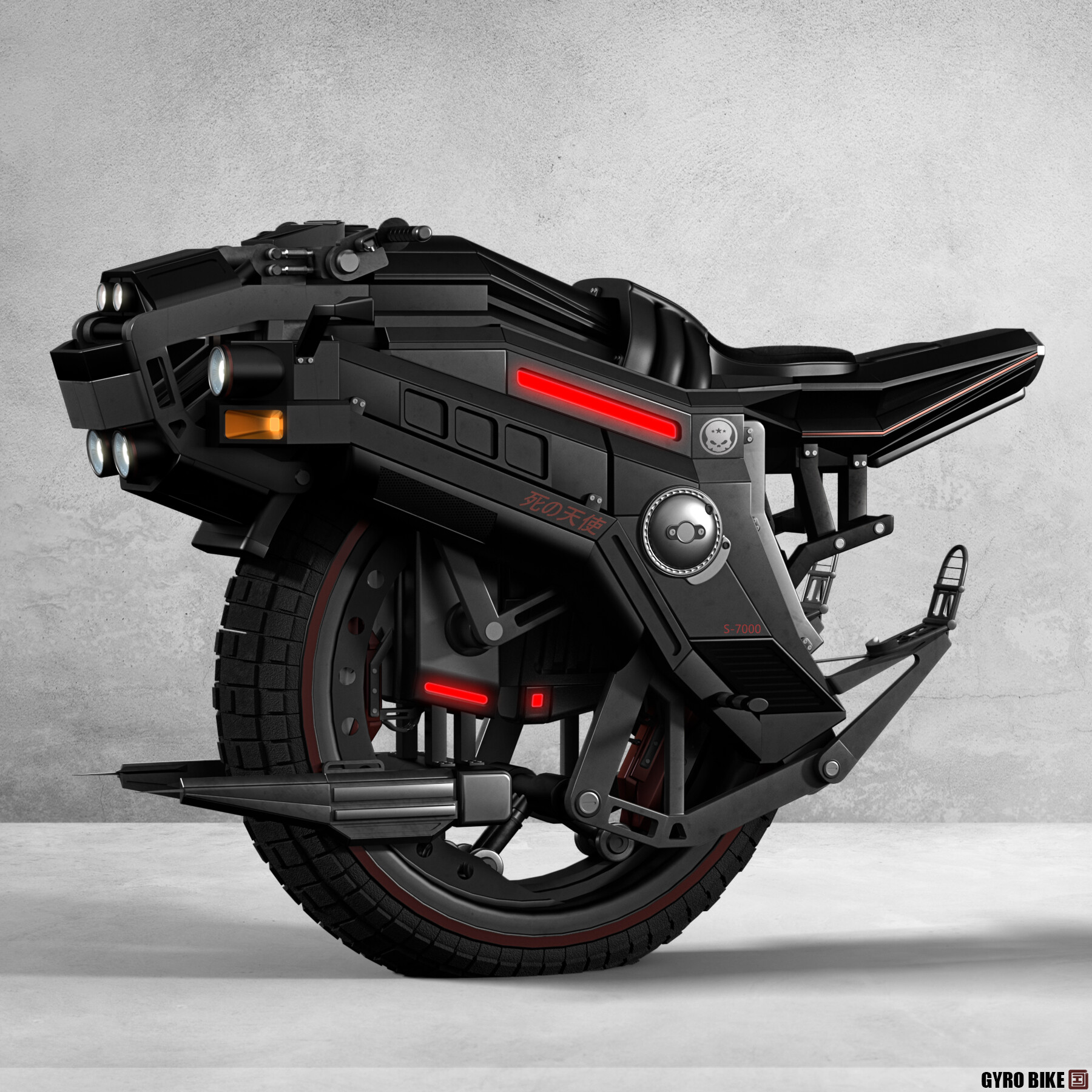GyroBike
Group number-Q12
A self balancing bike, helps you ride the bike without risks.


"GyroBike reinvents the training wheel!"
Gyrowheel essentially has a gyroscope inside. Gyroscopes are spinning wheels that exhibit a special property called precession. When a force is put at the top of a spinning wheel (such as a rider falling on a bicycle), rather than falling, the gyroscope simply turns, or precesses, in the direction of the fall. This occurs on normal bike wheels when the bike is traveling at higher speeds. Hence, it is easier to ride a bicycle
once you "get going." Gyrowheel takes advantage of this property
even when the bike is moving slowly. The disk inside
Gyrowheel spins independently of the bike wheel. Thus,
even when a rider is moving very slowly on the bicycle,
the precession of Gyrowheel is still felt. If the rider begins
to fall, Gyrowheel precesses under the rider's weight, restabilizing the bike.
As the name suggests, the Gyrowheel features a battery-powered
spinning disk where the spokes of a wheel are usually found.
A process known as gyroscopic precession helps keep the
bike and rider upright without the need for those nasty,
noisy training wheels attached to the frame of the
would-be bicycle riders of old. The degree of influence that the Gyrowheel has on the stability of the bike can be reduced three times before it's swapped out for the bike's
standard wheel when the rider gains enough confidence and skill to go solo.
the self-confidence and the practice is best for any learner to learn and actually then try on the bike.
formulae and thesis:
1.2 Gyroscopic Torque Change in Angular momentum is given by: = 𝑜 𝑥 ′ - 𝑜 𝑥 = 𝑥 𝑥 ′ = 𝑜 𝑥 .𝛿𝜃 … (in the direction of 𝑥 𝑥 ′ ) = I.𝜔. 𝛿𝜃 And rate of change of angular momentum: = I.𝜔. 𝛿𝜃 𝑑𝑡 Torque applied to the disc causing the disc precession is given by: T = lim𝛿𝑡→0 𝐼𝜔. 𝛿𝜃 𝛿𝑡 = I.𝜔. 𝛿𝜃 𝑑𝑡 = I.𝜔. 𝜔𝑝 … ∴ 𝑑𝜃 𝑑𝑡 = 𝜔𝑝 From above equation, we get to know that torque we can generate on bike to balance is given by product of moment of inertia of rotating mass, angular velocity of rotating mass and angular velocity of tilting motion of the mass.
It aims to replace traditional training wheels or stabilizers
and to eradicate the bad habits that they teach kids when learning to ride a bike -
leaning away from a turn and constantly putting a foot down at the first sign of a
wobble when they're eventually taken off.
★ Jyrobike (the original one)
A Jyrobike is a bicycle with a special front wheel designed to make balancing easier. It was manufactured and sold by a company of the same name. Special front wheel contains a rotating flywheel driven by a battery powered motor which rotates at high speed like a top. The flywheel spins much faster than the front wheel rolls, and acts as a gyroscope, even when the bike is moving slowlyReviews:
"The majority of children learn to ride their first two-wheeler with training wheels, which incidentally, simply don't 'train' a rider to do anything," she told Ars. "At best, training wheels keep a rider from tipping over. At worst they cause nasty spills. Training wheels also teach bad riding habits that are counter-effective to correct riding technique." She points out that once the wheels are removed, children then have to unlearn those bad habits, often with even more accidents. The gyrowheel is, at its heart, a simple idea. Create a wheel for children's bicycles that contains another rapidly spinning wheel, and as any physics students will tell you, the gyro effect will keep the wheel upright. That means that even first-time bike riders will be able to stay upright once one of the battery-powered wheel is attached to their bike.History
The inventors of the technology which the original Gyrowheel was based on were Debbie Sperling, Hannah Murnen, Nathan Sigworth, and Augusta Niles, who conceived and tested the concept between 2004 and 2007 as part of a graduate project at the Thayer School of Engineering. Their invention won the 2006 Break Through Award from Popular Mechanics.
If you try to tilt the axis of a gyroscope in one direction, it will turn in a different direction.
When a bike leans, the gyroscopic effect tends to steer the handlebars in the direction of the lean,
bringing the wheels back under the bicycle and helping to keep it upright.
